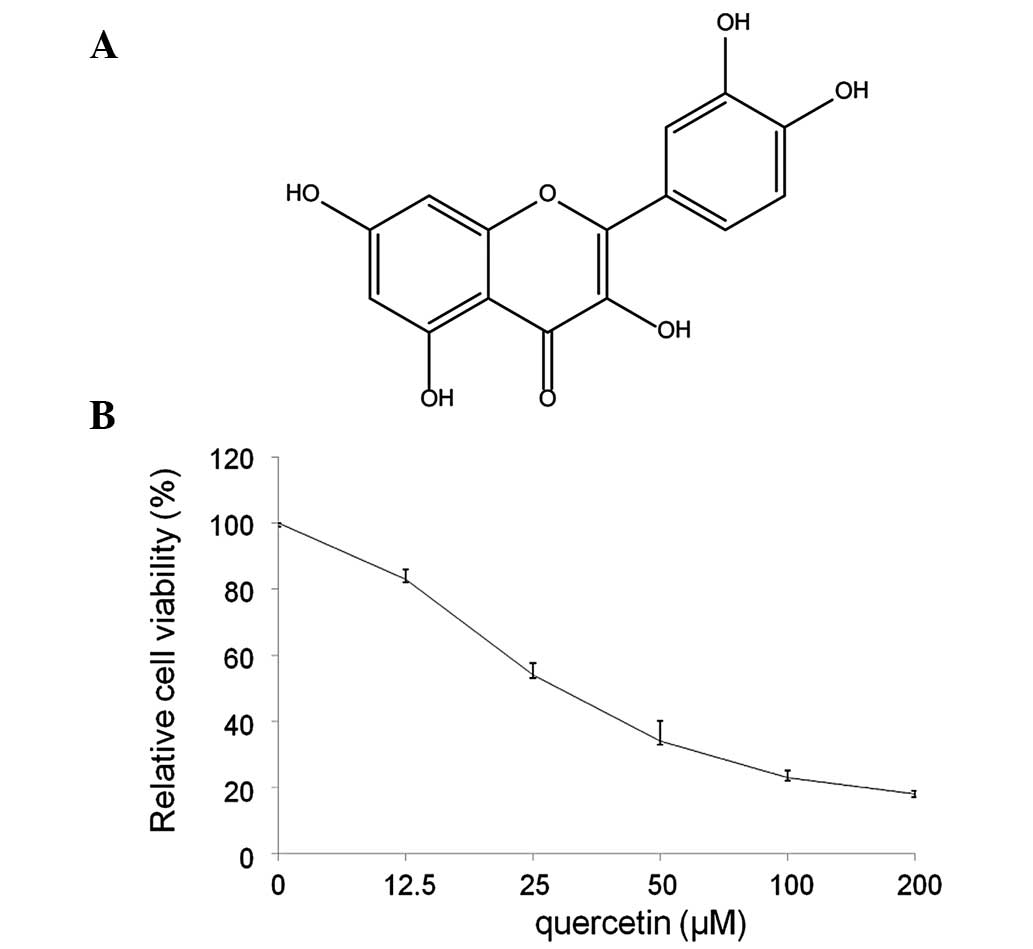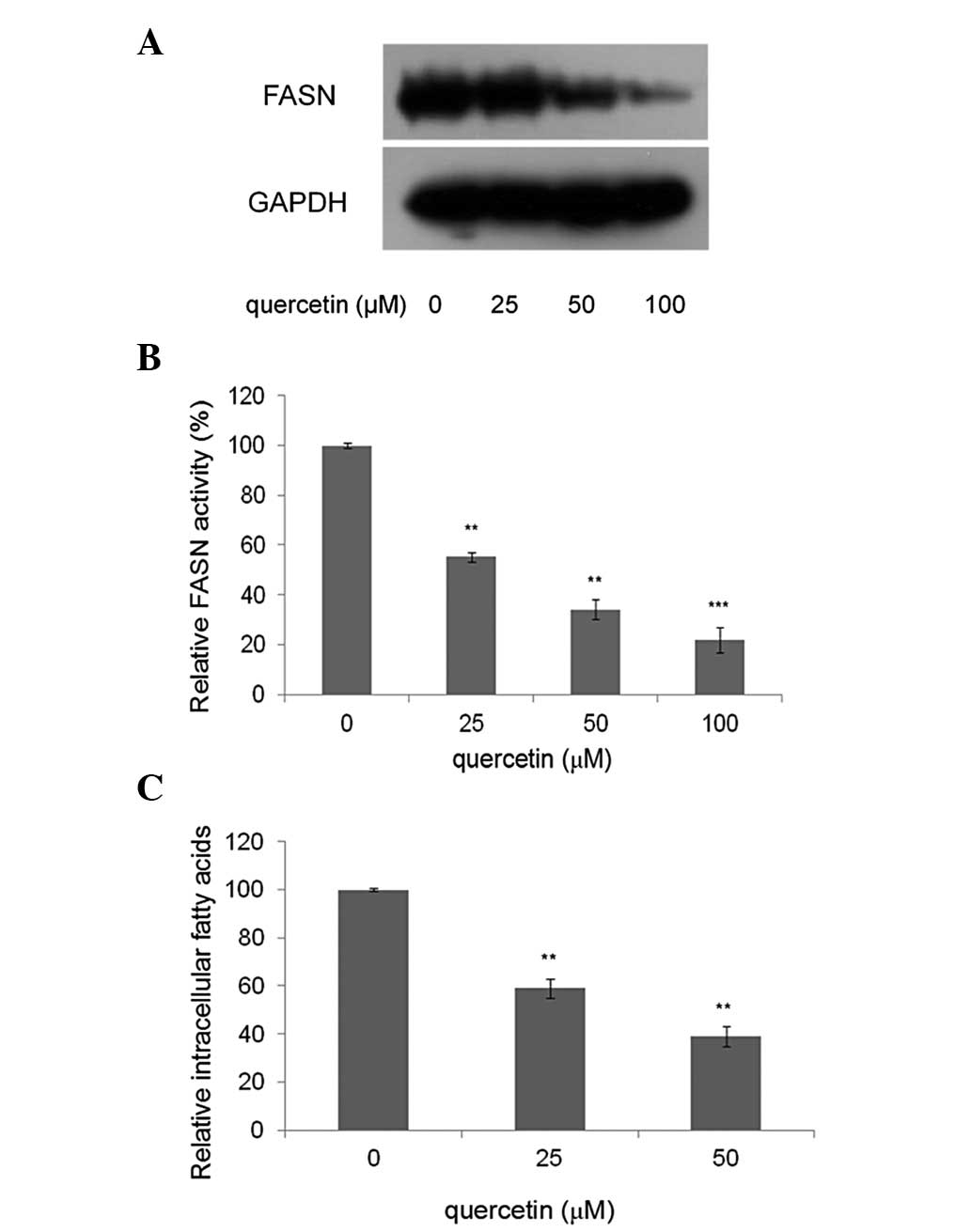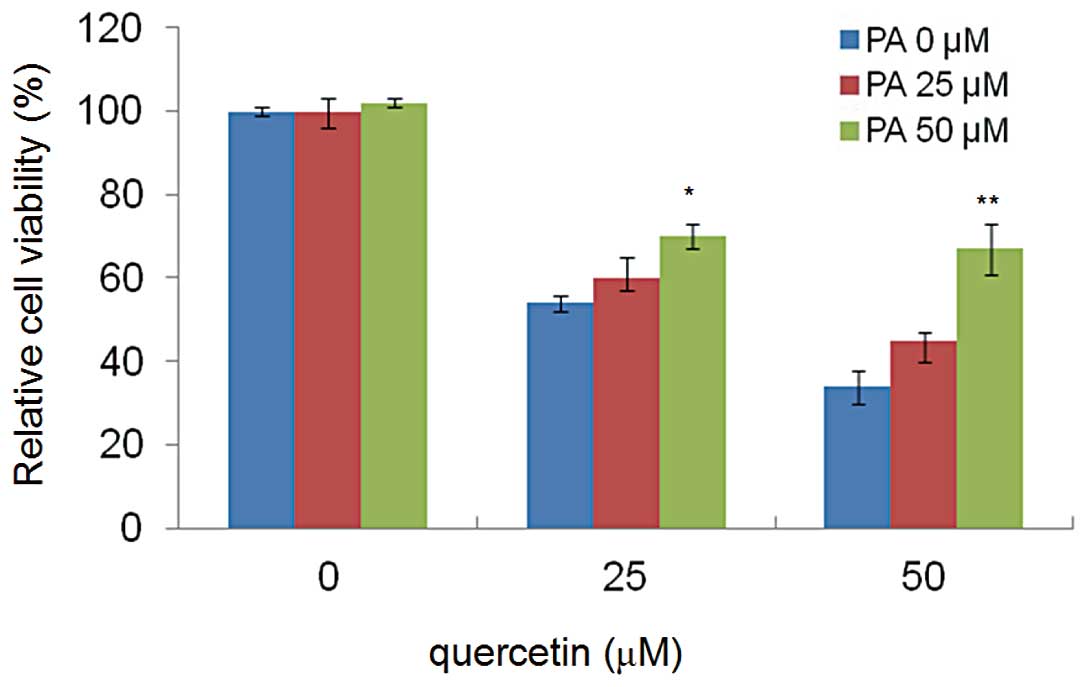|
1
|
Alo’ PL, Visca P, Marci A, Mangoni A,
Botti C and Di Tondo U: Expression of fatty acid synthase (FAS) as
a predictor of recurrence in stage I breast carcinoma patients.
Cancer. 77:474–482. 1996.
|
|
2
|
Milgraum LZ, Witters LA, Pasternack GR and
Kuhajda FP: Enzymes of the fatty acid synthesis pathway are highly
expressed in in situ breast carcinoma. Clin Cancer Res.
3:2115–2120. 1997.
|
|
3
|
Epstein JI, Carmichael M and Partin AW:
OA-519 (fatty acid synthase) as an independent predictor of
pathologic state in adenocarcinoma of the prostate. Urology.
45:81–86. 1995.
|
|
4
|
Swinnen JV, Roskams T, Joniau S, Van
Poppel H, Oyen R, Baert L, Heyns W and Verhoeven G: Overexpression
of fatty acid synthase is an early and common event in the
development of prostate cancer. Int J Cancer. 98:19–22. 2002.
|
|
5
|
Pizer ES, Lax SF, Kuhajda FP, Pasternack
GR and Kurman RJ: Fatty acid synthase expression in endometrial
carcinoma: correlation with cell proliferation and hormone
receptors. Cancer. 83:528–537. 1998.
|
|
6
|
Gansler TS, Hardman W III, Hunt DA,
Schaffel S and Hennigar RA: Increased expression of fatty acid
synthase (OA-519) in ovarian neoplasms predicts shorter survival.
Hum Pathol. 28:686–692. 1997.
|
|
7
|
Rashid A, Pizer ES, Moga M, Milgraum LZ,
Zahurak M, Pasternack GR, Kuhajda FP and Hamilton SR: Elevated
expression of fatty acid synthase and fatty acid synthetic activity
in colorectal neoplasia. Am J Pathol. 150:201–208. 1997.
|
|
8
|
Orita H, Coulter J, Tully E, Kuhajda FP
and Gabrielson E: Inhibiting fatty acid synthase for
chemoprevention of chemically induced lung tumors. Clin Cancer Res.
14:2458–2464. 2008.
|
|
9
|
Visca P, Sebastiani V, Botti C, Diodoro
MG, Lasagni RP, Romagnoli F, Brenna A, De Joannon BC, Donnorso RP,
Lombardi G and Alo PL: Fatty acid synthase (FAS) is a marker of
increased risk of recurrence in lung carcinoma. Anticancer Res.
2:4169–4173. 2004.
|
|
10
|
Alo PL, Amini M, Piro F, et al:
Immunohistochemical expression and prognostic significance of fatty
acid synthase in pancreatic carcinoma. Anticancer Res.
27:2523–2527. 2007.
|
|
11
|
Kuhajda FP: Fatty-acid synthase and human
cancer: new perspectives on its role in tumor biology. Nutrition.
16:202–208. 2000.
|
|
12
|
Walter K, Hong SM, Nyhan S, et al: Serum
fatty acid synthase as a marker of pancreatic neoplasia. Cancer
Epidem Biomar. 18:2380–2385. 2009.
|
|
13
|
Prieto-Hontoria PL, Pérez-Matute P,
Fernández-Galilea M, et al: Role of obesity-associated
dysfunctional adipose tissue in cancer: a molecular nutrition
approach. Biochim Biophys Acta. 1807:664–678. 2011.
|
|
14
|
Tartter PI, Papatestas AE, Ioannovich J,
Mulvihill MN, Lesnick G and Aufses AH Jr: Cholesterol and obesity
as prognostic factors in breast cancer. Cancer. 47:2222–2227.
1981.
|
|
15
|
van den Brandt PA, Spiegelman D, Yaun SS,
et al: Pooled analysis of prospective cohort studies on height,
weight, and breast cancer risk. Am J Epidemiol. 152:514–527.
2000.
|
|
16
|
Lahmann PH, Hoffmann K, Allen N, et al:
Body size and breast cancer risk: findings from the European
Prospective Investigation into Cancer and Nutrition (EPIC). Int J
Cancer. 111:762–771. 2004.
|
|
17
|
Kroenke CH, Chen WY, Rosner B and Holmes
MD: Weight, weight gain, and survival after breast cancer
diagnosis. J Clin Oncol. 23:1370–1378. 2005.
|
|
18
|
Caan BJ, Kwan ML, Hartzell G, et al:
Pre-diagnosis body mass index, post-diagnosis weight change, and
prognosis among women with early stage breast cancer. Cancer Cause
Control. 19:1319–1328. 2008.
|
|
19
|
Dawood S, Broglio K, Gonzalez-Angulo AM,
Kau SW, Islam R, Hortobagyi GN and Cristofanilli M: Prognostic
value of body mass index in locally advanced breast cancer. Clin
Cancer Res. 14:1718–1725. 2008.
|
|
20
|
Calle EE, Rodriguez C, Walker-Thurmond K
and Thun MJ: Overweight, obesity, and mortality from cancer in a
prospectively studied cohort of U.S. adults. New Engl J Med.
348:1625–1638. 2003.
|
|
21
|
Kuhajda FP: Fatty acid synthase and
cancer: new application of an old pathway. Cancer Res.
66:5977–5980. 2006.
|
|
22
|
Fan H, Wu D, Tian W and Ma X: Inhibitory
effects of tannic acid on fatty acid synthase and 3T3-L1
preadipocyte. Biochim Biophys Acta. 1831:1260–1266. 2013.
|
|
23
|
Wu D, Ma X and Tian W: Pomegranate husk
extract, punicalagin and ellagic acid inhibit fatty acid synthase
and adipogenesis of 3T3-L1 adipocyte. J Funct Food. 5:633–641.
2013.
|
|
24
|
Wang Y, Tian W and Ma X: Inhibitory
effects of onion (Allium cepa L.) extract on proliferation
of cancer cells and adipocytes via inhibiting fatty acid synthase.
Asian Pacific J Cancer Prev. 13:5573–5579. 2012.
|
|
25
|
Quan X, Wang Y, Ma X, et al: α-Mangostin
induces apoptosis and suppresses differentiation of 3T3-L1 cells
via inhibiting fatty acid synthase. PLoS One. 7:e333762012.
|
|
26
|
Jiang HZ, Ma QY, Fan HJ, et al: Fatty acid
synthase inhibitors isolated from Punica granatum L. J Braz
Chem Soc. 23:889–893. 2012.
|
|
27
|
Jiang HZ, Quan XF, Tian WX, et al: Fatty
acid synthase inhibitors of phenolic constituents isolated from
Garcinia mangostana. Bioorg Med Chem Lett. 20:6045–6047.
2010.
|
|
28
|
Fan H, Tian W and Ma X: Curcumin induces
apoptosis of HepG2 cells via inhibiting fatty acid synthase. Targ
Oncol. Jul 3–3013.(Epub ahead of print). DOI:
10.1007/s11523-013-0286-5
|
|
29
|
Erlund I: Review of the flavonoids
quercetin, hesperetin, and naringenin. Dietary sources,
bioactivities, bioavailability, and epidemiology. Nutr Res.
24:851–874. 2004.
|
|
30
|
Gibellini L, Pinti M, Nasi M, et al:
Quercetin and cancer chemoprevention. Evid Based Complement
Alternat Med. 2011:5913562011.
|
|
31
|
Park MH and Min do S: Quercetin-induced
downregulation of phospholipase D1 inhibits proliferation and
invasion in U87 glioma cells. Biochem Biophys Res Commun.
412:710–715. 2011.
|
|
32
|
Du G, Lin H, Wang M, et al: Quercetin
greatly improved therapeutic index of doxorubicin against 4T1
breast cancer by its opposing effects on HIF-1α in tumor and normal
cells. Cancer Chemother Pharmacol. 65:277–287. 2010.
|
|
33
|
Leiherer A, Mündlein A and Drexel H:
Phytochemicals and their impact on adipose tissue inflammation and
diabetes. Vascul Pharmacol. 58:3–20. 2013.
|
|
34
|
Hurt RT and Wilson T: Geriatric obesity:
evaluating the evidence for the use of flavonoids to promote weight
loss. J Nutr Gerontol Geriatr. 31:269–289. 2012.
|
|
35
|
Arçari DP, Santos JC, Gambero A and
Ribeiro ML: The in vitro and in vivo effects of yerba mate (Ilex
paraguariensis) extract on adipogenesis. Food Chem.
141:809–815. 2013.
|
|
36
|
Uddin S, Ah-Kang J, Ulaszek J, Mahmud D
and Wickrema A: Differentiation stage-specific activation of p38
mitogen-activated protein kinase isoforms in primary human
erythroid cells. Proc Natl Acad Sci USA. 101:147–152. 2004.
|
|
37
|
Menendez JA, Mehmi I, Atlas E, Colomer R
and Lupu R: Novel signaling molecules implicated in
tumor-associated fatty acid synthase-dependent breast cancer cell
proliferation and survival: Role of exogenous dietary fatty acids,
p53-p21WAF1/CIP1, ERK1/2 MAPK, p27KIP1, BRCA1, and NF-kappaB. Int J
Oncol. 24:591–608. 2004.
|
|
38
|
Angst E, Park JL, Moro A, et al: The
flavonoid quercetin inhibits pancreatic cancer growth in vitro and
in vivo. Pancreas. 42:223–229. 2013.
|
|
39
|
Del Follo-Martinez A, Banerjee N, Li X,
Safe S and Mertens-Talcott S: Resveratrol and quercetin in
combination have anticancer activity in colon cancer cells and
repress oncogenic microRNA-27a. Nutr Cancer. 65:494–504. 2013.
|
|
40
|
Berndt K, Campanile C, Muff R, Strehler E,
Born W and Fuchs B: Evaluation of quercetin as a potential drug in
osteosarcoma treatment. Anticancer Res. 33:1297–1306. 2013.
|
|
41
|
Gao X, Wang B, Wei X, et al: Anticancer
effect and mechanism of polymer micelle-encapsulated quercetin on
ovarian cancer. Nanoscale. 4:7021–7030. 2012.
|
|
42
|
Lai WW, Hsu SC, Chueh FS, et al: Quercetin
inhibits migration and invasion of SAS human oral cancer cells
through inhibition of NF-κB and matrix metalloproteinase-2/-9
signaling pathways. Anticancer Res. 33:1941–1950. 2013.
|
|
43
|
Lam TK, Shao S, Zhao Y, et al: Influence
of quercetin-rich food intake on microRNA expression in lung cancer
tissues. Cancer Epidemiol Biomarkers Prev. 21:2176–2184. 2012.
|
|
44
|
Zhang SY, Ma XF, Zheng CG, Wang Y, Cao XL
and Tian WX: Novel and potent inhibitors of fatty acid synthase
derived from catechins and their inhibition on MCF-7 cells. J
Enzyme Inhib Med Chem. 24:623–631. 2009.
|
|
45
|
Li P, Tian W, Wang X and Ma X: Inhibitory
effect of desoxyrhaponticin and rhaponticin, two natural stilbene
glycosides from the Tibetan medicinal plant Rheum tanguticum
Maxim. ex Balf, on fatty acid synthase and human breast cancer
cells. Food Funct. 5:251–256. 2014.
|
|
46
|
Li BH and Tian WX: Inhibitory effects of
flavonoids on animal fatty acid synthase. J Biochem. 135:85–91.
2004.
|
|
47
|
Aggarwal BB and Shishodia S: Molecular
targets of dietary agents for prevention and therapy of cancer.
Biochem Pharmacol. 71:1397–1421. 2006.
|
|
48
|
Bandyopadhyay S, Pai SK, Watabe M, et al:
FAS expression inversely correlates with PTEN level in prostate
cancer and a PI3-kinase inhibitor synergizes with FAS siRNA to
induce apoptosis. Oncogene. 24:5389–5395. 2005.
|
|
49
|
Menendez JA and Lupu R: Fatty acid
synthase and the lipogenic phenotype in cancer pathogenesis. Nature
Rev Cancer. 7:763–777. 2007.
|
|
50
|
Pizer ES, Thupari J, Han WF, et al:
Malonyl-coenzymeA is a potential mediator of cytotoxicity induced
by fatty-acid synthase inhibition in human breast cancer cells and
xenografts. Cancer Res. 60:213–218. 2000.
|
|
51
|
Zhou W, Simpson PJ, McFadden JM, et al:
Fatty acid synthase inhibition triggers apoptosis during S phase in
human cancer cells. Cancer Res. 63:7330–7337. 2003.
|
|
52
|
Murthy S, Albright E, Mathur SN and Field
FJ: Modification of CaCo-2 cell membrane fatty acid composition by
eicosapentaenoic acid and palmitic acid: effect on cholesterol
metabolism. J Lipid Res. 29:773–780. 1988.
|














